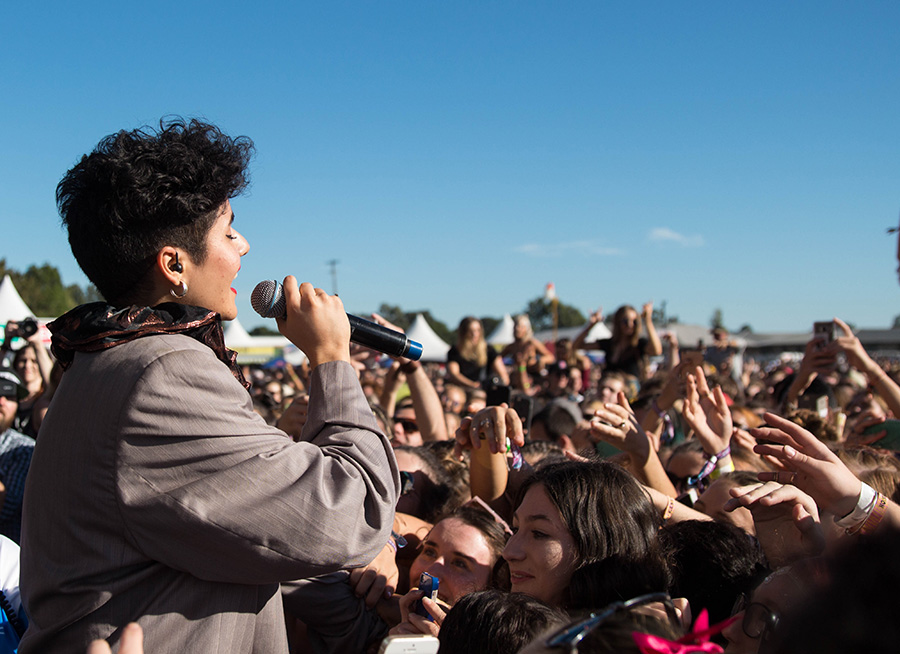Montaigne was less optimistic about the viability of it becoming a larger income source, making the point that it’s often the partnerships found in your chosen spaces that keep you doing what you do.
“I think maybe not? But possibly! It just depends. If I want to be an artist who tours a bunch and does a bunch of non-digital work still (which I do somewhat), that reduces the amount of time I can spend streaming which I think is detrimental to really building it to the point where it’s raking in a lot of dollars. At this point I see it as mostly being supplementary, but who knows really.”
“I’d love to do more things in the games industry, not necessarily to do with actualmontaigne streaming, and maybe those things will be as substantial as touring and royalties.”
For Molloy, it’s all about the love of the game, man. And big pasta dinners.
“I earn about $200 a month and I stream a fair bit. Every night sometimes. So it’s not quite there with the music yet. That’s good cash to sit and hang out, and it means once a month I can go do a ‘big’ shop. Pad the pantry out with olive oil and herbs and a big thing of nice coffee, which rules. But the fact is I’d do it for zero dollars.”
“I just want what anyone wants: for people to watch me game, and pace around my flat talking to myself. To hang out on the internet and watch me cook and work out and sing into the camera. I want people to watch me and think ‘this is a man who indulges his passions without limits, and is always polite online’.”
But Twitch isn’t without problems. Like Youtube it’s plagued by an automatic copyright infringement system that seems to miss more often that it hits. A recent high profile case saw Herman Li – guitarist in Grammy-nominated power metal band DragonForce – outright lose his Twitch channel for a week. The audio that flagged the copyright strike? He was playing DragonForce music on his stream.
Streaming has a lot to learn, but perhaps other networks have a lot to learn from streaming. The relationship between creator and viewer can feel personal on a level other platforms simply don’t allow for, and the ways artists can earn money from their viewers puts Spotify to shame.
“The more advanced tech gets”, Montaigne foresees, “the more people are gonna want to indulge in digital/virtual experiences. I think that’s inevitable.”
“There is however a distinctly precious human feeling in sharing a room with a bunch of people physically including your favourite artist that I don’t think will lose its appeal to many.”
No matter how intimate streaming may be, the feeling of being at a gig has yet to be replicated by any live stream. Live music and live streaming are flirting, yes, but a fork in the road is more likely than a total blurring of the lines.
“I definitely miss live music, and live music discovery”, Woodes shared. “I have seen some pretty remarkable reimaginings of large online shows by Glass Animals, Billie Eilish, and Delivered Live here in Australia.”
“Integrating those kinds of ideas into music venues for when venue allocation is exhausted but there is still online interest would be a great addition to performances. I grew up in a regional part of Australia and it was very rare to have live music visit home.”
The audience is an essential part of any show, something Montaigne, Woodes, and Molloy know intimately. The star and the crowd – one needs the other.
“There’ll be crossover for sure”, Molloy says, “but I think more likely it’ll be that gaming, which is normally watched by streaming, will be watched live and in person. In terms of live music… I don’t think a streamed concert will be able to achieve what a live one does for the majority of folks.”
“People don’t just go for the music and to watch the band playing it. They go to dance and blow off steam outside of their house. Or for social reasons, to meet other fans. To see friends or cause a girl they matched on Tinder is taking them. They go to heckle you and buy merch off your tour manager and get frigged up off beers and drugs.”
“They go to be ‘seen’, not sit in their house watching a screen. They come to the show to support you ‘cause you flown all the way from sunny Sydney to be there with them. I’d love it if live music streaming became a big deal, but I think it’ll need some tinkering before it’ll happen.”
Streaming is an in-between space, a moment to interact with the celebs on a human level. A peer behind the curtain, a glimpse beyond the fourth wall. It can be a touching way for your fans to learn about their idols. In turn, you may learn a few things about them.
Sure, it won’t replace touring anytime soon, but for a side-gig? You could do a lot worse than starting a Twitch channel.
This article appears in print in Happy Mag Issue 15. Grab your copy here.
Follow these artists on Twitch:
Woodes | Montaigne | Roy Molloy
Words by Tom Cameron
Collage by Kubi Vasak



